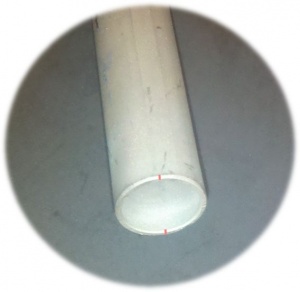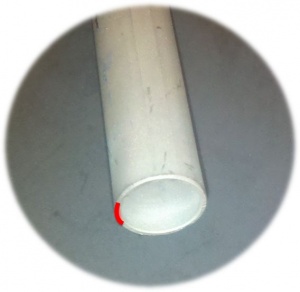Difference between revisions of "End-Scan Using the End Wall"
From ATTWiki
(→Avoiding Outliers) |
(→Avoiding Outliers) |
||
| Line 89: | Line 89: | ||
<tr valign=top> | <tr valign=top> | ||
<td width=300> | <td width=300> | ||
| − | When scanning the end walls of highly reflective tubing with striations like shown in the image on the right, it is better to either cover the end with a coat of Maganaflux, Dynaflux, | + | When scanning the end walls of highly reflective tubing with striations like shown in the image on the right, it is better to either cover the end with a coat of Maganaflux, Dynaflux, foot powder spray, or cover it with an end target to avoid outlier points.<br><br> |
The image below an end target plastic label attached to the end of the same tube. In this case, there are no striations visible.<br><br> | The image below an end target plastic label attached to the end of the same tube. In this case, there are no striations visible.<br><br> | ||
[[image:EndWithEndWall_HighReflective_Striation_EndTarget.jpg|200px]] | [[image:EndWithEndWall_HighReflective_Striation_EndTarget.jpg|200px]] | ||
Revision as of 02:43, 29 September 2012
|
|
About the End Wall Orientation
|
We recommend this for increased precision where it is possible to strike the end wall. high-reflectivity and burrs are not an issue on the end wall of the tube. The End Wall method is also very useful for thicker wall tubes.
|
Measure Setup
|
How To Use This End-Scan Technique
The advantage of this method is that it is easy to use. The disadvantage is that it is more prone to outlier points from the inner diameter surface. |
Another Way to Use This End-Scan Technique
The advantage of this method is that it is less prone to outlier points. The disadvantage is that it is hard to aim at thinner walls. |
Avoiding Outliers
Other Pages
- See also End-Scan Using the Scissor Motion
- See also End-Scan Using End Targets
- Back to VTube-LASER





